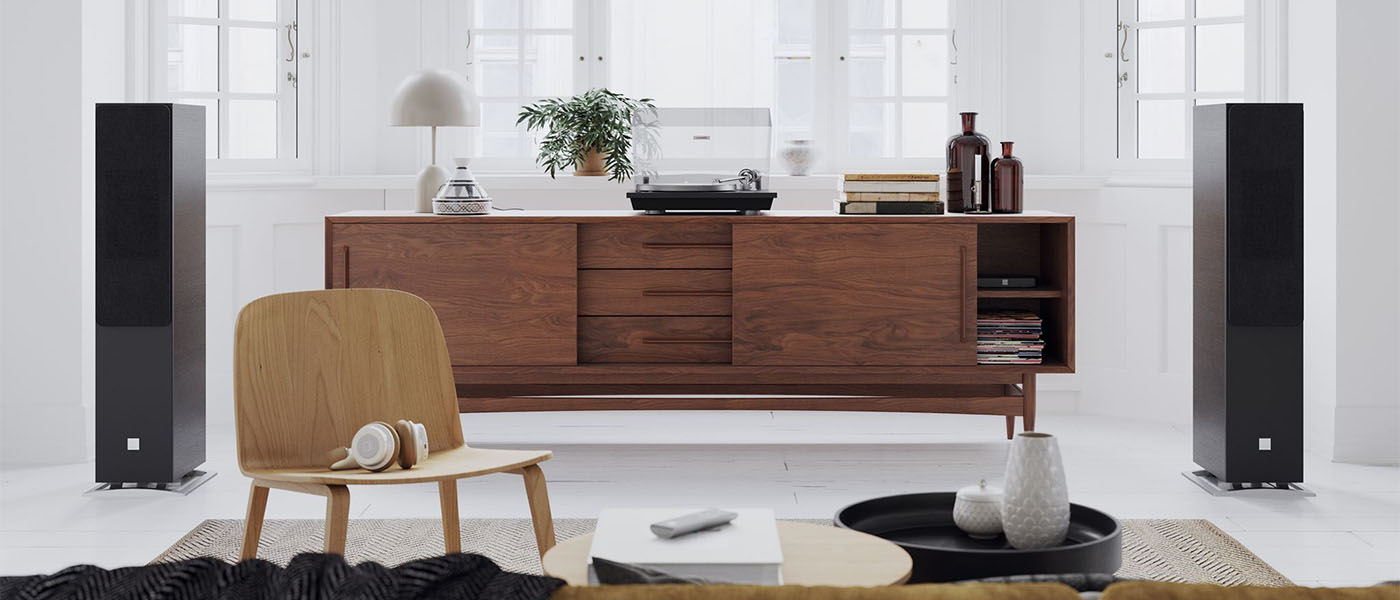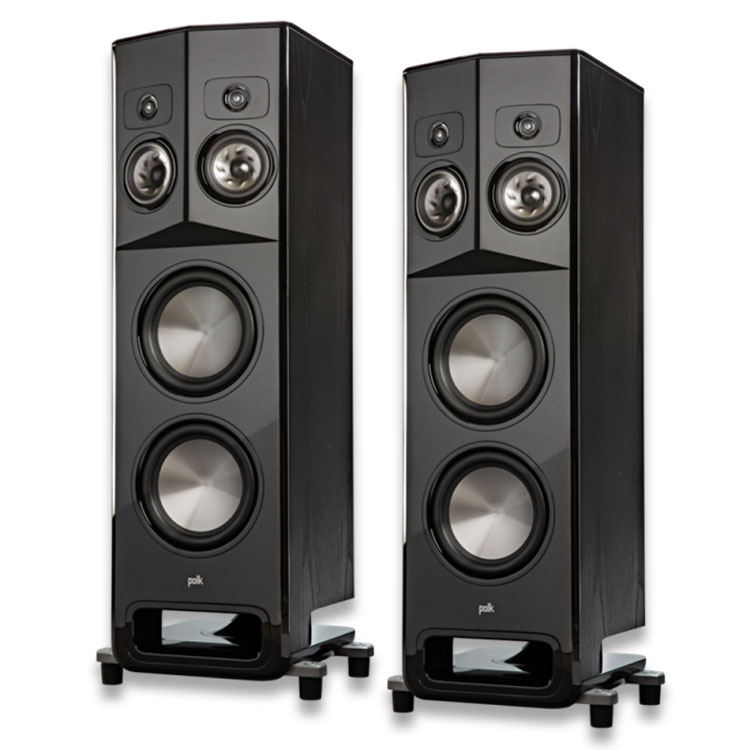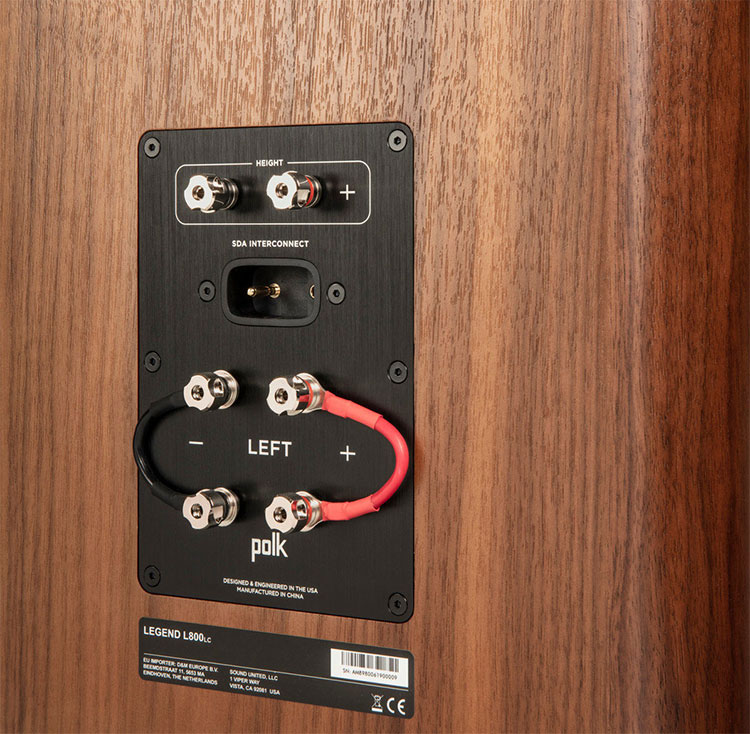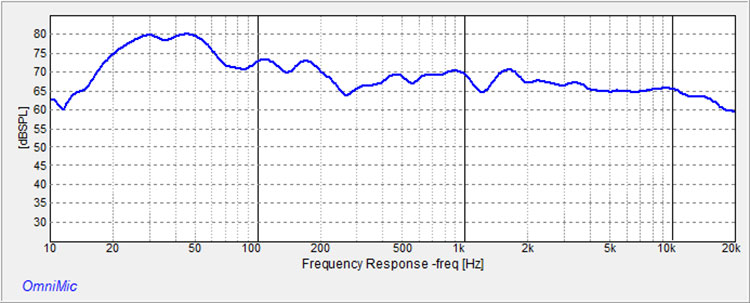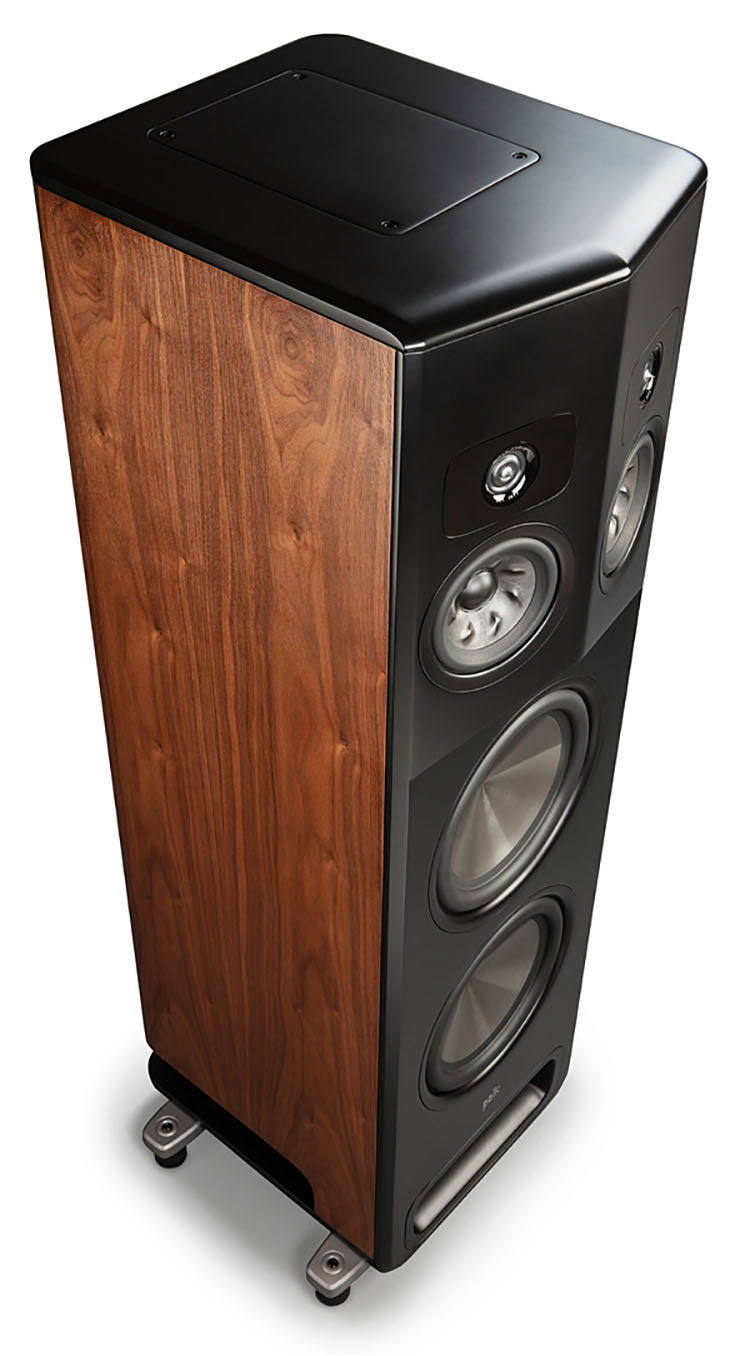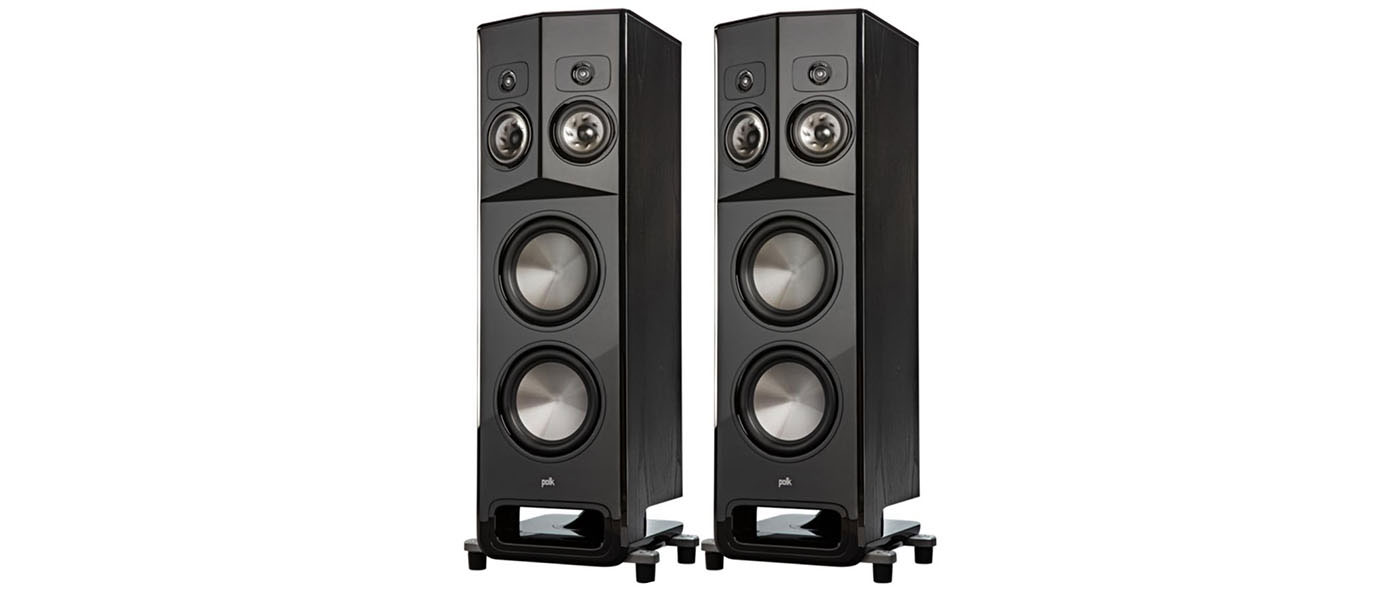
Polk Audio returns to its high-end speaker roots with the introduction of the Legend series. The top of the Legend series, the L800, represents Polk Audio’s all-out effort to bring an edge of the art loudspeaker to the market. I have found the L800’s to be one of the finest loudspeakers I have heard, regardless of price. They exceeded my expectations in every way, and added a few surprises, too!
Polk Audio Legend L800 Floor-standing Loudspeaker
- Fully integrated design
- High efficiency
- Exceptional power handling
- Built-in subwoofers
- Room friendly for a big speaker
- A Soundstage that is wide and deep
- Extended treble
- SDA Pro technology brings music to life
- Ability to bi-amp
- Super speaker for not super speaker price
Polk Audio has given audiophiles a reason to celebrate with their new flagship speaker, the Legend L800 loudspeaker system with SDA Pro technology. Polk may not be thought of as a high-end speaker company, but that is where they started in the 1970s, and the L800s (along with the rest of the Legend series) are bringing Polk back to prominence in the arena of high-end audio speakers.
The late 1970s were a golden age for analog audio. The compact disc hadn’t been invented yet, and most of our listening was handled by turntables, FM tuners, and cassette decks. Stereo receivers provided the power, and electronics stores were abundant in even smaller cities.
Speakers were proliferating, with brands like JBL, Acoustic Research, Bose, Infinity, Cerwin-Vega, Advent, and Polk Audio. Having graduated high school in 1978, I spent many hours listening to countless loudspeakers at several stereo stores, and one speaker which stood out from the crowd was the Model 10 from a company called Polk Audio, which was founded in 1972 and by the late 70s, had a reputation for quality and solid engineering.
The Model 10s are the speakers which made Polk into a household name. They were neutral, had excellent bass, a see-through clarity that came close to the legendary Quad ESL 57 speakers, and something which is hard to define: a coolness factor. Two of the professors at the small branch of Penn State (where I pretended to study from 1978 to 1982) had Polk model 10s as their main speakers. They would have long conversations with audiophile students about the virtues of speakers which were good for jazz. The Polk Model 10s proved these professors were smart audiophiles who valued musical integrity over just playing loud. A guy who owned these Polks could hold his own with guys who had $2000 speakers, and they only cost $400 per pair (about $1650 in 2021 dollars).
Jump forward 40 years, and unless you live in a large city, you probably no longer have a dedicated audio store in your area. If you are old enough, you may remember the excitement of being able to walk into a store and listen to one of over a dozen systems in EACH store. I still have fond memories about the scent of a good stereo emporium and the thrill of buying a pair of speakers, loading them into my brother’s truck, and taking them home. It was an event. Your friends came over when you unboxed them, and help you set them up in the system. Guys would talk about woofers, tweeters, watts, and turntable wow and flutter for hours.
Today, most of us order everything from a website. We are promised an in-home trial. Companies like Polk have had to adapt to this new world where many people don’t even want to leave the house to get a pizza, let alone shop for a stereo. But Polk is doing something that proves they have adapted to the internet age. They are returning to their roots in making high-end speakers again. They are selling these speakers both factory direct and through select retailers. They have even put into place a system where you can buy through a dealer near you at the same price as you would pay for buying them factory direct. This support for small businesses is to be applauded. Let’s delve into the top of Polk’s Legend series of speakers, the Legend L800 with SDA Pro technology.
Enclosure type:
Vented power port bass with sealed midrange
Drivers:
- 2 x 1″ Pinnacle Ring Radiator – Tweeter
- 2 x 5.25″ Turbine Cone – Mid/Woofer
- 2 x 10″ Woofer
Frequency response:
25Hz to 50,000Hz
Nominal impedance:
4 ohms
Sensitivity (1 W @ 1 m):
87dB
Crossover type:
3-way Orth
Mid/woofer crossover frequency:
370Hz
Tweeter/mid crossover frequency:
2,800Hz
Dimensions (HWD):
48.6″ x 17.94″ x 17.38″
Weight:
118lbs
MSRP:
$5,998 (pair)
Website:
Company:
SECRETS Tags:
2021 Loudspeaker Review, Polk, legend, L800, speakers, SDA, floor-standing
The L800s are a unique design and are actually three speakers in one. The front baffle has two arrays of drivers, with one offset at 15 degrees towards the listener on the inside of the baffle and one offset at 15 degrees away from the listener, towards the outer wall. The first speaker which has this native 15-degree toe-in covers the main listening bandwidth, using a 5.25-inch Turbine Cone driver and a 1-inch ring radiator tweeter, to cover the frequencies from 370Hz to 20,000Hz.
The second speaker is the SDA Pro portion, with an identical 5.25-inch midrange and 1-inch ring radiator facing 15 degrees away from the listener. What makes it unique is this outward firing speaker is fed a “difference” signal from the opposite speaker. The left speaker gets left minus right, and the right speaker gets right minus left. When seated properly between the speakers, the intended effect is to allow one to hear only the right speaker with one’s right ear and only the left speaker with the left ear. A cable (which is supplied by Polk in the speaker packaging) connects the speakers to deliver this out-of-phase signal. Finally, each speaker has dual 10-inch bass drivers which handle the bass below 370Hz. Bass is enhanced by a large port at the bottom which points downwards into a large waveguide. Polk calls it the Power Port. If you’re using the L800s in an Atmos setup, there are height modules available that can be installed on top of the towers.
Each speaker comes in a box that clearly identifies the LEFT speaker and RIGHT speaker. They are packed exceptionally well, with two boxes and several bands of thick foam surrounding each speaker. Each cabinet comes with substantial hard rubber feet already installed, and placement is quite easy for such a large (118 pounds and roughly 4 feet tall and 1.5 feet square) speaker. In our room, they are 30 inches from the back wall and 40 inches from the sidewalls. Thanks to the built-in 15-degree angles of the front baffles, no toe-in is required.
The rest of the system is a Yamaha CD-2100 SACD/CD player, a Marantz 7703 pre-amp used in two-channel mode with the CD Direct mode engaged, and a pair of PS Audio M700 Mono amplifiers. Speaker cables are the Better Cable Blue Truth Reference models.
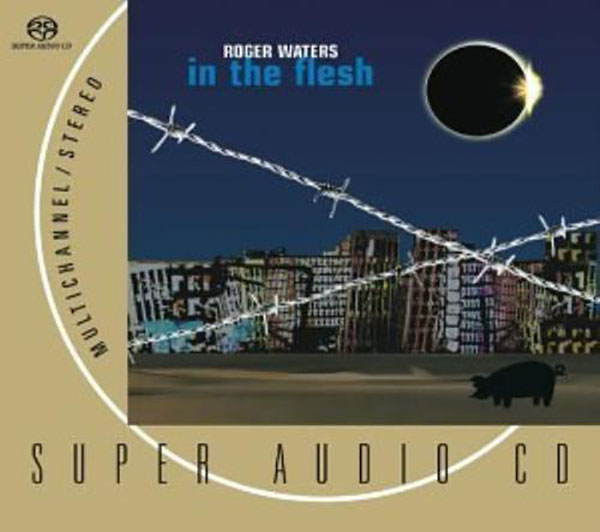
Roger Waters “In The Flesh”
The first disc in the mix is a standard I have used for 15 years when evaluating loudspeakers. It is a performance that requires that a loudspeaker to be able to deliver multiple instruments across a vast stage, soaring vocals from two women who can inspire one with the range of notes they can hit, and sound effects that can go from thrilling to filling one with dread. Early in Disc 1, when the infamous helicopter scene from “Another Brick in the Wall” plays, the L800s delivered deep, pulsing bass that was in the area normally handled by a separate subwoofer.
The four 10-inch drivers handled this test with ease. The sonic effects from birds chirping to Hal (from 2001: A Space Odyssey) telling Dave how frightened he is, the big Polks were capable of agility and articulation in the way one expects from a monitor speaker.
The stage as presented from this performance is immense. “Time” and “Money” are played back to back. The bells and chimes from Time lead into a majestic 12 minutes of classic rock with menacing bass, rhythm guitars on both sides of the stage, and the lead guitar smack in the middle of it all. With the Polks, the stage starts outside the room, over one’s head, and with incredible depth. The “you are there” feeling was so palpable that a guy offered me some weed. Of course, I declined. Ok – so the Polks can handle grandeur. How do they fare with the delicate?
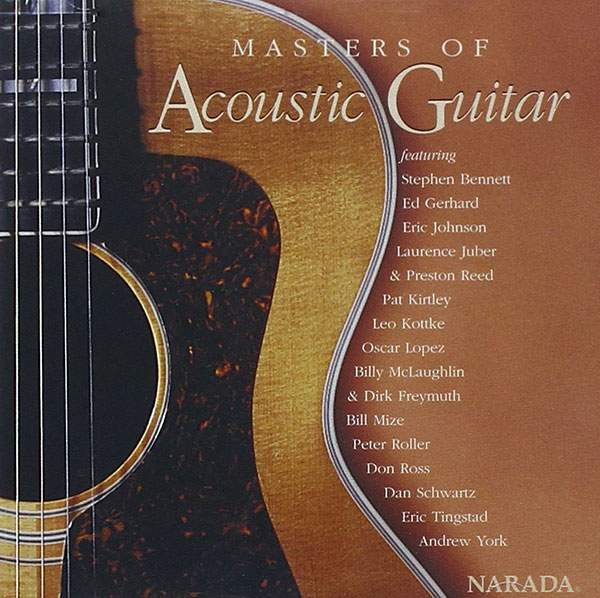
“Masters of Acoustic Guitar”
Our youngest son (age of 24) is an accomplished guitar artist. One of the most remarkable memories I have is from Christmas, 2017 when we gave him a Ukulele for a present. He took it out of the box, and started playing the intro guitar solo from Led Zeppelin’s “Stairway to Heaven.” He had never held a Ukulele before this moment. His favorite instrument is one of his many acoustic guitars. Thanks to this constant exposure to his live renditions of a variety of songs on his guitars, I have a solid reference for this medium.
Masters of Acoustic Guitar brings together 16 of the finest guitar artists in the world on one disc. Don Ross’s “Afraid to Dance” opens the disc, and the Polks bring a healthy dose of a real guitar into the listening room. When his hand hits the body of the instrument, the percussive bass is immediate and tuneful. The 5.25-inch drivers are up to the task of delivering each note with believable neutrality and just a hint of warmth to the feeling.
Billy McLaughlin and Dirk Freymouth bring us to track 2 with “Tsavo.” This is a song that makes one reach for a good scotch and a fine cigar while being immersed with a relaxing duet of unamplified talent. With the SDA Pro technology taking center stage, Billy and Dirk are each anchored just to the inside of the left and right Polk speaker. The feeling of two separate performers comes across with impeccable realism. The whole disc is an auditory treat, and the Legend L800 speakers do a fine job bringing each artist to life. These big speakers are plenty agile!
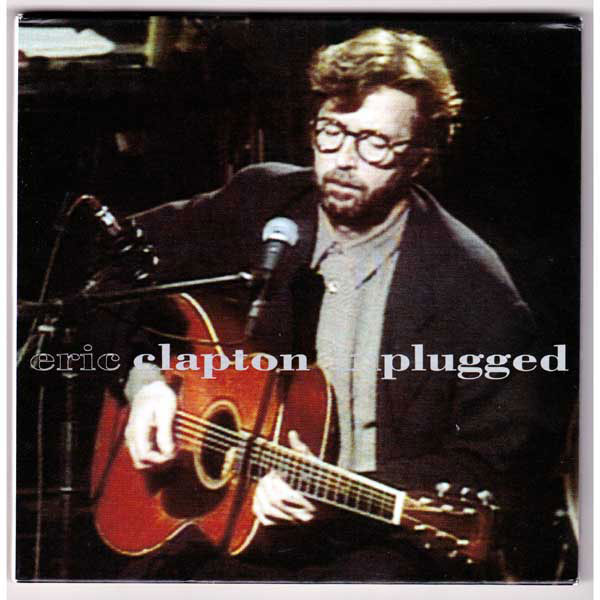
Eric Clapton “Unplugged”
My fondness for unamplified music makes Eric Clapton: Unplugged a go-to disc for any time I am in a down mood. After the tragedy of losing his son, Connor, in a tragic accident, Clapton demonstrates a strength of faith in this performance. The recording quality in “Unplugged” is stellar, and requires a true full-range system to deliver it into one’s listening room with authority. The L800s are more than up to the task. The emotion from Mr. Clapton when he performs “Tears in Heaven” will bring goosebumps through these excellent speakers.
Another gem, “Before You Accuse Me,” sets the tone for a warm evening of blues performed by a rock legend. “Lonely Stranger” features not only the guitar work we all expect but also a wonderful addition of piano and female background vocals that almost take one to the 40s. We then go to “Nobody Knows When You’re Down and Out,” and you can almost smell the Memphis Barbeque.
No discussion of “Unplugged” would be complete without “Layla.” Through the Polks, one can see Clapton smiling as he’s singing, with the ladies backing him up. The 70s FM radio version did not have this much style, and again the L800s do a really admirable job of making a listener feel the performance. The percussive effects are tight and tuneful, and the music is all brought to the listener with the right amount of bass depth and the delicacy that the guitar work requires.
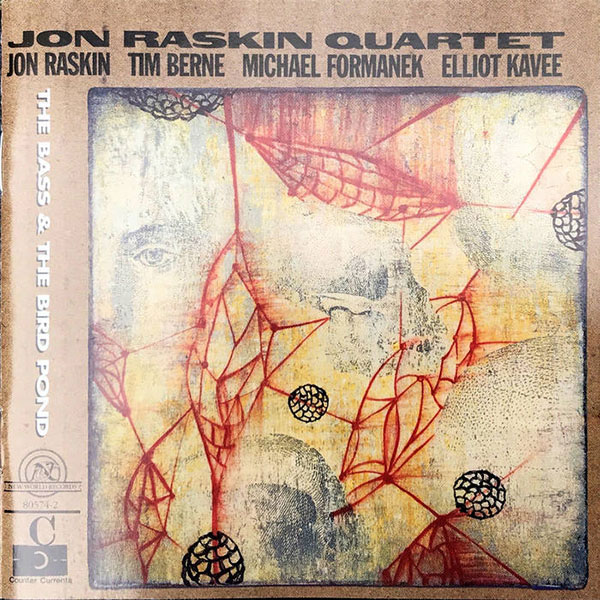
The John Raskin Quartet “The Bass and The Bird Pond”
This is one challenging disc compilation of unamplified jazz. It is the type of performance one would expect in a hard-to-find jazz bar in 1958. This isn’t toe-tapping, happy music that brings a smile to your face. This is jazz performers taking alto sax, sopranino sax, baritone sax, cello, bass, and drums and wringing as much asymmetrical performance from each instrument as they possibly can.
In the 20 minutes plus opening song, “Bloodcount”, several sopranino solos require a speaker to deliver a biting sound that’s at first hard on the ears, but then you realize that Raskin is working the saxophone as hard as he can, and you start to appreciate the speaker’s ability to deliver this much drive without sounding harsh.
The cello and percussion work in “The Third Path to Nowhere” is done with a delicacy that lets you into the performance. The brushes on cymbals are remarkably concise, and the snare is presented with such transparency that one can almost see Elliott Kavee several feet behind the saxophone players, which is where he belongs.
The pianissimo to crescendo moments in “The Third Path to Nowhere” are startling through the Polks. On several occasions, the light cymbal brushes and quiet cello playing draw you in, then three saxophones are unleashed, and the Polks bring the dynamic change with authority.
The title track, “The Bass and The Bird Pond”, is pure chaos. All four band members are going all out with dueling saxophones, drums, and cello to see which can wring out the last bit of anger from each instrument. The Polks again did not flinch. I did a few times, but the speakers remained calm.

Supertramp “Brother Where You Bound”
Brother Where You Bound was Supertramp’s first album after Roger Hodgson left the band and Rick Davies took over the writing and singing duties. The high-pitched vocals from Crime of the Century and Breakfast in America were replaced by a much more graveled voice, and the music itself was perfect for the mid-1980s: lots of hard guitar work and some outstanding drumming, especially in the bass drum.
Two tracks were featured for this review, as both offer multiple opportunities for a speaker to air out the dynamics.
On “Better Days”, after a calm opening, a fierce kick drum leads into a driving song about the presidential politics of the day. The L800s will hit you in the chest with deep, tight bass centered at 32 Hz. After the dry performance of John Raskin, the feel here is nothing short of exhilarating. Towards the end of the song, we get a bit of some Pink Floyd treatment in the form of politicians of the day explaining why we should support them. The midrange of the Polks was again crystal clear, and these vocals were heard and understood with ease.
“Brother Where You Bound”, the title track, starts off with an ominous discussion between two politicos and then leads into an 18-minute long manifesto of driving guitars, pounding drums, and interludes of an almost jazz-like section that connects the first portion of the song, which is telling us that fascism or communism is coming, and the second portion, which tells us to be ready to prevent this apocalypse.
There is one section of “Brother Where You Bound” that truly showcases the SDA Pro technology. Soldiers are on the march, and the SDA tech has the soldiers starting well outside the right wall, across the stage in front of you, then exiting stage left. I have heard this song countless times over the last 36 years, and the L800s brought it to life, unlike any speaker I have auditioned.
SDA Pro, as presented by the Polk Legend L800’s, is a fascinating approach to making the listening experience closer to live music. If one is willing to follow the reasoned science behind SDA Pro, it is a welcome and believable approach to getting more performance from a single pair of speakers. To review what is happening with SDA Pro, the left and right speakers are designed to work as a complete system. As mentioned earlier, identical midrange and tweeter pairs are offset at 15 degrees from a straight baffle. The main midrange and tweeter have this 15-degree angle towards the listener. In each speaker, the midrange and tweeter angled 15 degrees away from the listener are fed a 180-degree out-of-phase signal to make for this true stereo effect.
Does it work, of course, is the real question. The answer is yes. If a track has the deep and wide soundstage recorded in it, the L800s will bring this to the listening room with exceptional results. It does, however, require some strict but simple rules to be followed: 1. Do not toe in the speakers, as this is part of the design. 2. The listener must be willing to sit exactly in the centerline between the speakers. If you try to sit off-axis, not only will SDA Pro not work effectively, but the sound stage itself will become two-dimensional. Other high-quality speakers may allow for a good off-axis listening experience, but SDA Pro speakers, by design, are not meant for this.
I love to tinker with ideas with all things audio. Ten years ago, when Audyssey XT-32 was new, I put a subwoofer in the middle of a room and ran it on the subwoofer channel. This delivered bass to below 20Hz in the worst possible subwoofer position.
This love of tinkering got me to think about the L800s and how well integrated the dual 10-inch subs were with the 5.25-inch Turbine mids and the 1-inch Ring Radiator tweeters. Connecting SDA Pro requires about 20 seconds of running the supplied SDA Pro cord between the two speakers. What would happen if SDA Pro was disconnected?
Without SDA Pro, the L800s lose that magic in the sweet spot center. They will gain, however, in off-axis listening. The Polk Audio Legend L800 speakers have an additional feature: versatility. With SDA Pro disengaged, I tried a few favorite tracks while listening off-axis, even to the point of being outside the left and right speaker. Like most (if not all) high-end speakers, the Polks delivered a well-balanced sound stage, even when listening off the center axis. If one of your audiophile friends wants to challenge your speakers because of the “you have to sit in the center” axiom, you can demonstrate that these speakers go BOTH ways.
I use the excellent Omni Mic measuring system from Dayton Audio to perform response sweeps when evaluating a loudspeaker. The Polk Legend L800s have one of the best in-room response curves I have seen in years of testing speakers. With no room correction applied, the L800s measured within +4dB from 63 to 10,000Hz. Below 63Hz, they delivered an astounding sound power curve to below 20Hz, achieving true subwoofer status. Above 10,000Hz, they had the normal roll-off one would expect in room. This is an incredible performance for an all-inclusive, $6,000 speaker package.
The Polk Audio Legend L800 Loudspeaker is an affordable super speaker that brings more to the listening experience than one expects for the price.
- Bass one would expect from a high-end subwoofer
- Deep and wide soundstage with SDA engaged
- Affordable super speaker
- Neutral midrange and highs that deliver on music
- Exceptional dynamics
- Can handle any type of music
- Doesn’t need an expensive amp for excellent performance
- Looks and feels high end in my system
- Lockable castors for easier movement
- Switch to disengage SDA Pro for multiple listeners
The Polk Legend L800s are a stone-cold bargain in the world of high-end loudspeakers. They deliver a true full-range sound from below 20Hz to above 20,000Hz. The soundstage brought forth by SDA Pro technology creates a unique listening experience. They can handle micro-dynamics with the finesse of a small monitor while delivering crescendos from a full-scale orchestra with ease. The L800s do not require an expensive amplifier to deliver a terrific performance, but if you want to power them with a five-figure amplifier, they are more than capable. For $5,998 per pair, I don’t know of any speakers that can deliver everything this Polk L800 system delivers. Highly recommended.


